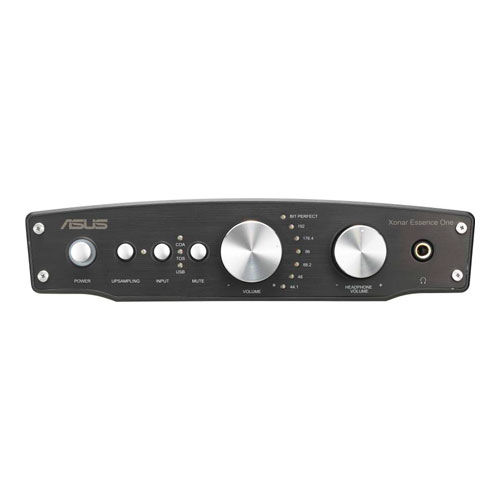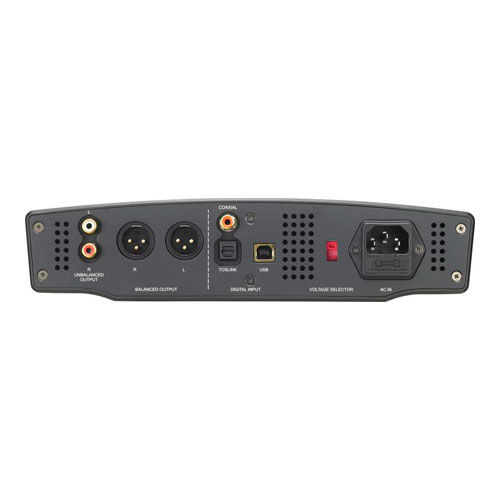In the quest for improving the sound of my HTPC, I came across Juli@, Xonar ST/STX internal cards and Xonar Essence One.
Finally placed an order with Pristine Notes on 29th May and the Xonar E1 landed up today. After placing the order, I came to know of the octroi thingy in Pune and I felt mad for a day (Muncipal Corporation making money out of a poor wannabe audiophile like me). I had a lovely experience with Pristine Notes which I will write about later in the appropriate section.

Some marketing gyan from ASUS
o Hi-Fi audio through the world's first 8x symmetrical upsampling
o Extreme audio clarity with 120dB SNR
o Built-in headphone amp powers up even 600 ohms impedance headphones
o 11 swappable OP-amps for customizable tonal characters
o Cleanest sound thanks to a dedicated internal power supply
Unboxing the box (like unboxing lot of things) was a pleasure. The box came with Xonar E1 DAC, a USB cable, two power cords and one Driver CD which I promptly inserted in the HTPC and installed the driver. Boy, getting this DAC to work is as troublesome as installing an internal sound card. The only time it saves is opening the HTPC cabinet and inserting the card in one of the PCI/PCIe slots. In fact the ASIO drivers gave quite a trouble (compared to the motherboard realtek drivers).
E1 comes with the Burr-Brown PC1795K DAC in the unit, and it accepts 192 kHz / 24-bit which makes it capable of converting the highest quality source material available online. The box is made entirely of aluminum, giving the impression of well done work, the impression of that contributes also the respectable weight of the DAC. The ASUS Xonar Essence One supports Asynchronous Data Transfer mode. This is using Cmedia CM6631 USB2.0 controller that can support the latest USB Audio Device Class Definition V2.0 and high-definition audio processing, with capabilities of up to 192KHz/ 32bit.
On the front panel we have the power button, surrounded by a blue light when its powered on, upsampling function, which performs a 8x Symmetrical Upsampling, then a source selector with options like coaxial, optical, USB and even mute button. There are two volume potentiometers, one for speakers and one for headphones, a series of LEDs that indicate the received bitrate by the DAC. There is a LED which lights up when you get a bitperfect output from the source. Finally, there is a dedicated headphone output.

On the back, things look at least as well, we have there almost all types of connections: unbalanced RCA analog outputs, AES/EBU balanced outputs through 3-pin XLR connectors, S/PDIF coaxial and Optical input plus an asynchronous USB input. All connectors are of course gold plated on both the front and back, except for IEC connector.

In order to kick off my testing Foobar 2k was fired up and ASIO drivers configured and I selected WASAPI driver as well as the KS (kernel streaming) driver. With both I could not get the bit perfect led on the E1 to light up.
Next I fired my favourite media player mediamonkey with the WASAPI plugin. Initially the sound was horrible with lot of distortion. After unchecking the exclusive mode of the WASAPI plugin, the sound became perfect but I did not get the bit perfect led to light up. After few minutes on the internet, it seems that this is an issue with the ASUS ASIO driver. However I came across a mediamonkey ASIO plugin which supports many of the external DACS and I downloaded the ASIO plugin. After selecting the new ASIO plugin, I finally see the bitperfect led light up . Though I cannot make out any difference in the SQ between the ASIO driver and the WASAPI driver, I have left mediamonkey to use the ASIO driver as of now.
. Though I cannot make out any difference in the SQ between the ASIO driver and the WASAPI driver, I have left mediamonkey to use the ASIO driver as of now.
The same otachan driver is available for foobar, but foobar crashes when I install the foobar version of this otachan driver . Hence as of now, no bitperfect output for foobar
. Hence as of now, no bitperfect output for foobar
All i can say is that there is quite a difference between the onboard realtek sound. More to follow later....
Finally placed an order with Pristine Notes on 29th May and the Xonar E1 landed up today. After placing the order, I came to know of the octroi thingy in Pune and I felt mad for a day (Muncipal Corporation making money out of a poor wannabe audiophile like me). I had a lovely experience with Pristine Notes which I will write about later in the appropriate section.

Some marketing gyan from ASUS
o Hi-Fi audio through the world's first 8x symmetrical upsampling
o Extreme audio clarity with 120dB SNR
o Built-in headphone amp powers up even 600 ohms impedance headphones
o 11 swappable OP-amps for customizable tonal characters
o Cleanest sound thanks to a dedicated internal power supply
Unboxing the box (like unboxing lot of things) was a pleasure. The box came with Xonar E1 DAC, a USB cable, two power cords and one Driver CD which I promptly inserted in the HTPC and installed the driver. Boy, getting this DAC to work is as troublesome as installing an internal sound card. The only time it saves is opening the HTPC cabinet and inserting the card in one of the PCI/PCIe slots. In fact the ASIO drivers gave quite a trouble (compared to the motherboard realtek drivers).
E1 comes with the Burr-Brown PC1795K DAC in the unit, and it accepts 192 kHz / 24-bit which makes it capable of converting the highest quality source material available online. The box is made entirely of aluminum, giving the impression of well done work, the impression of that contributes also the respectable weight of the DAC. The ASUS Xonar Essence One supports Asynchronous Data Transfer mode. This is using Cmedia CM6631 USB2.0 controller that can support the latest USB Audio Device Class Definition V2.0 and high-definition audio processing, with capabilities of up to 192KHz/ 32bit.
On the front panel we have the power button, surrounded by a blue light when its powered on, upsampling function, which performs a 8x Symmetrical Upsampling, then a source selector with options like coaxial, optical, USB and even mute button. There are two volume potentiometers, one for speakers and one for headphones, a series of LEDs that indicate the received bitrate by the DAC. There is a LED which lights up when you get a bitperfect output from the source. Finally, there is a dedicated headphone output.

On the back, things look at least as well, we have there almost all types of connections: unbalanced RCA analog outputs, AES/EBU balanced outputs through 3-pin XLR connectors, S/PDIF coaxial and Optical input plus an asynchronous USB input. All connectors are of course gold plated on both the front and back, except for IEC connector.

In order to kick off my testing Foobar 2k was fired up and ASIO drivers configured and I selected WASAPI driver as well as the KS (kernel streaming) driver. With both I could not get the bit perfect led on the E1 to light up.
Next I fired my favourite media player mediamonkey with the WASAPI plugin. Initially the sound was horrible with lot of distortion. After unchecking the exclusive mode of the WASAPI plugin, the sound became perfect but I did not get the bit perfect led to light up. After few minutes on the internet, it seems that this is an issue with the ASUS ASIO driver. However I came across a mediamonkey ASIO plugin which supports many of the external DACS and I downloaded the ASIO plugin. After selecting the new ASIO plugin, I finally see the bitperfect led light up
The same otachan driver is available for foobar, but foobar crashes when I install the foobar version of this otachan driver
All i can say is that there is quite a difference between the onboard realtek sound. More to follow later....
Last edited:

